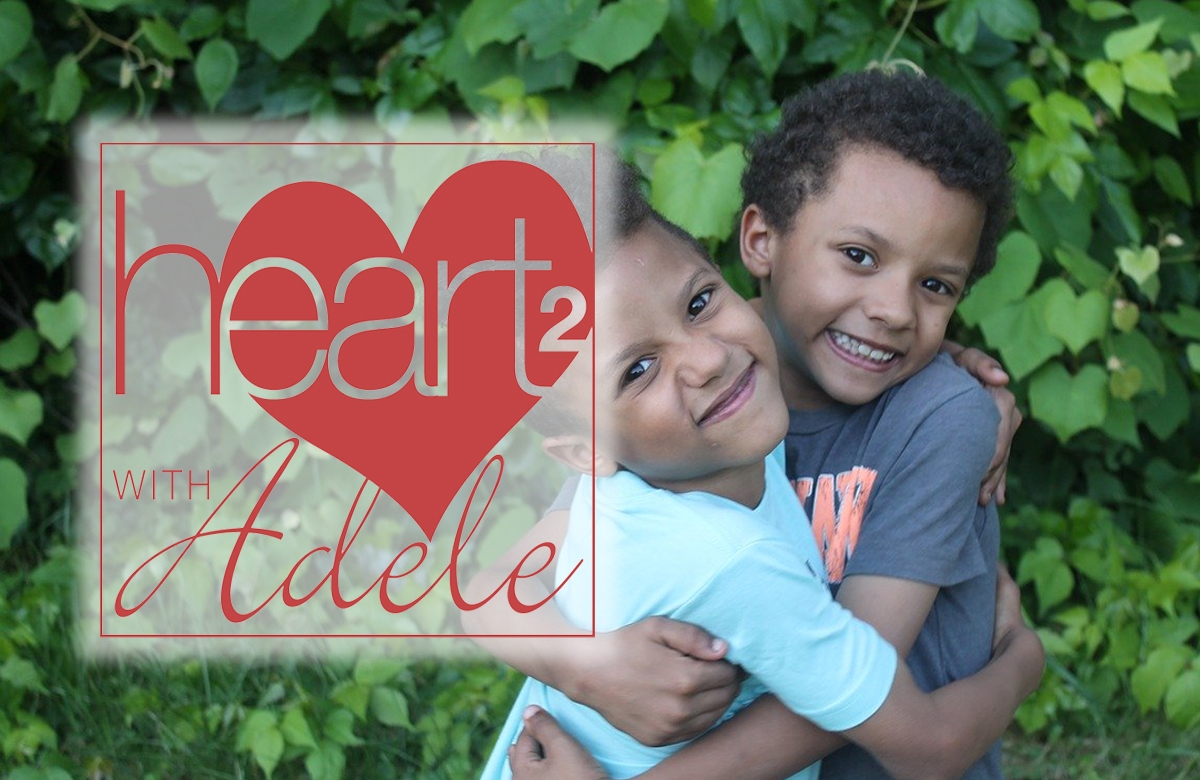
When sibling rivalry is like taming a Green-Eyed Monster
Question
Dear Adele,
My husband and I always wanted three children. To tell the truth, sometimes we would like to send two of them back. Any two would do, actually. Having just one child would eliminate the constant fighting, bickering, competing, and sometimes hatefulness that seems to rear its ugly head. Sometimes, our kids are absolutely, horrifically, embarrassingly awful to each other. We swear the Green-Eyed Monster has moved in. We are absolutely at our wits end trying to help our kids realize that we love all three of them, equally. Can you help us slay our family Green- Eyed Monster? If not, could you arrange a suitable adoption for any two of our beloved children?
Green-Eyed Monster Tamers
Answer
Dear Green-Eyed Monster Tamers,
When parents decide to have more than one child, they make that decision based on hopes, dreams and expectations, for the family they wish to create. In your case you had three children.
Perhaps you had that second child and third child so the first one would have a playmate? Perhaps you had the third one dreaming that all three of your children would be deeply bonded through childhood, and share so much in common that they would love each other forever. Perhaps you pictured the three of them sitting on the floor, playing with their little trucks and Lego sets, quietly and cooperatively, for hours. While they were happily playing, you might have imagined yourselves sitting in overstuffed leather chairs in the family room, reading the Sunday addition of The Globe and Mail. Completing that picture, might’ve been the sweet sounds of Sunny Ritter playing Beethoven in the background, to increase your children’s IQ and interest them in studying classical piano. Your fantasy might have envisaged a CBC Sunday Morning Michael Enright interview playing on your radio discussing the issues in long term care, which you and your partner would be able to chat about at length, while the children played at your feet, happily on freshly vacuumed white carpet.
If you’re thinking ‘Lala Land’ parenting fantasies, Green-Eyed Monster Tamers, you are 100 per cent correct!
Parenting is a mighty tough job and the difficulty increases depending on the number of children you have. I often told my clients that parenting two children is not one plus one, but two squared. I would add that parenting three children is not two squared plus one, but three cubed. Usually the Green- eyed Monster accompanies the second and the third, as one of the complexities.
Sibling rivalry is the jealousy, competition, and fighting between children. It is the common normal experience of parents to house a Green-Eyed Monster at the same time that they are raising a family. I am happy to give you a few ideas about why the Green- Eyed Monster has taken up residence with you, how to see his value, and how to handle his presence in your home.
The National Geographic publication, “Your Emotions: The Science of How You Feel,” explains that jealousy is the pain one feels when one compares him/herself to someone else and anticipates a loss. It usually involves “a third party, someone who might be a rival for one’s affection such as a sibling, who gets attention from a parent. . . . Jealousy can involve feelings of fear, loss, anger, and humiliation”.
The article entitled “Jealousy & Envy,” goes on to say that there is value in jealousy, and that some of it is actually helpful. It can indicate that a person is committed to you. It can red- flag a relationship needing tending. Psychologists have suggested that it might mean a human’s identity and self-worth are at risk. Too much jealousy can be destructive, causing violent behaviour. It is associated with persons with low self-esteem, emotional instability and insecurity.
A C.S. Mott Children’s Hospital article entitled ‘Sibling Rivalry”, states that such problems usually begin immediately after the second child is born and usually last throughout childhood. It suggests that most children in families eventually develop some closeness. My life experience suggests this is not always the case.
According to the article, sibling rivalry occurs for many reasons. Children are trying to discover who they are and that they are separate from their siblings. They sometimes feel they’re not getting an equal amount of their parent’s attention, discipline or responsiveness. Some feel their place with their parents will not be the same when a second child arrives. Some children may not know how to get attention positively, or how to start activities that are playful and fun, so they start fights. A child who reminds a parent of a negative past person, might subconsciously treat that child differently. In families where aggression and fighting between children is considered a normal and acceptable resolution to conflict, the children fight more. Conflict is more prevalent in families lacking time to share regular quality time. Sibling rivalry increases when parents have less time for the family due to stress. Conflict increases when children are more stressed, bored, hungry or tired. How the children are treated and how the parents deal with conflict plays a big part in determining how well children get along.
An August 7, 2012 article from the Cleveland Clinic entitled, “Sibling rivalry tips: 5 for prevention, 5 for intervention”, suggests some good ideas for keeping the tides at bay.
1: “Stay calm, quiet and in control.” The idea here is to anticipate problems, and be proactive in presenting the image preventing them from starting in the first place. Keeping the voice soft and low is helpful. Presenting the image of being 100 per cent in control of the situation is desirable.
2: “Create a cooperative environment.” The idea here is to model for your children that easy-to-get-along style of interaction. Avoid any appearance of favoritism. Shy away from anything that fosters competition.
3: “Celebrate Individuality.” Avoid labels. Help each child feel special by spending separate time with each one. Provide opportunities for each child to have separate space and alone time.
4: “Plan fun family time.” Children tend to fight less when they have shared experiences that are fun and involve the whole family. Find ways to create great memories.
5: “Treat kids fairly- not equally.” Rewards and consequences should be meted out according to the needs of each individual child. Fairness not sameness is the basic principle.
The article goes on to suggest five ways to deal with the conflict between the children.
1: “Remember it takes two to tango.” Avoid placing blame, and help the children figure out their own role and contribution to the conflict.
2: “Listen.” Learn about active listening because children are more cooperative if they feel their side is heard.
3: “Give children problem solving tools.” Help your children figure out how they might have approached the problem in a better way.
4: “Make punishments private.” Try not to shame your child in front of other family members because it increases animosity.
5: “Have a family meeting.” Get everyone together and let each person have their say. Establish family rules on the problem topic. Post the rules for everyone to see.
According to ABC News, “The New Science of Siblings,” brothers and sisters argue or fight about 3.5 times per hour. That translates into one argument about every 10 minutes. Research has found “that siblings make 700 per cent more negative and controlling statements to each other than they do to friends.” A Psychology Today article entitled “Should you intervene in a sibling fight,” suggests that most of the time, children are able to resolve conflict without intervention. The article also says that “sibling squabbling is not only normal but necessary.”
I hope I have been helpful to you Green-Eyed Monster Tamers. I will conclude with a few quotations to help get you through:
‘Siblings are our partners and rivals, our first friends and our first enemies.” Erica Goldblatt Hyatt
“Be nice to your siblings. They’re your best link to your past, and the most likely to stay with you in the future.” Baz Lerhmann
“From their struggles to establish dominance over each other, siblings become tougher and more resilient.” Adele Faber
Sincerely, Adele
I'm looking forward to your questions! Email me at maryadeleblair@gmail.com and please put Heart to Heart in the subject line. Note that all columns will remain anonymous.
Photo: Lorilee Alanna on Unsplash








